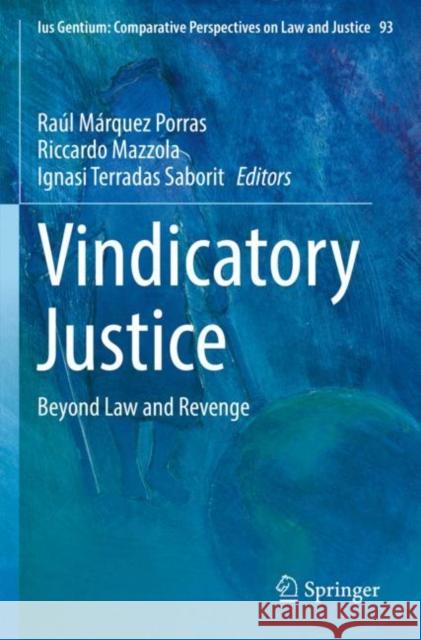Vindicatory Justice: Beyond Law and Revenge » książka
Vindicatory Justice: Beyond Law and Revenge
ISBN-13: 9783030795979 / Angielski / Miękka / 2022 / 290 str.
This volume offers a new theoretical approach to the analysis of the law/revenge binary, and attempts to dismantle the common idea of revenge as lacking any legal, moral or rational dimension. In contrast, the book puts forward a model of a complex system of justice—which it terms 'vindicatory'—wherein vendetta constitutes an authorized action, the core of which does not (just) lie in vengeance but also in settlement procedures for peace—or 'composition.' The first part of the book ("Vindicatory Justice: Conceptual Analyses and Forerunners") seeks to identify the nature of vindicatory justice and to shed light on the structure of so-called vindicatory systems. In turn, the second part ("Mapping Vindicatory Justice") illustrates, using examples gathered from a range of sociolegal contexts, the dynamic relationship between composition and authorized revenge in vindicatory systems. Taken as a whole, the volume shows that applying a longue durée historical perspective to the study of revenge systems allows us to clearly recognize composition and authorized revenge as features of the same legal system, even though one of them may seem predominant (or more eye-catching) than the other in certain cultural settings.
This volume offers a new theoretical approach to the analysis of the law/revenge binary, and attempts to dismantle the common idea of revenge as lacking any legal, moral or rational dimension. In contrast, the book puts forward a model of a complex system of justice—which it terms 'vindicatory'—wherein vendetta constitutes an authorized action, the core of which does not (just) lie in vengeance but also in settlement procedures for peace—or 'composition.' The first part of the book ("Vindicatory Justice: Conceptual Analyses and Forerunners") seeks to identify the nature of vindicatory justice and to shed light on the structure of so-called vindicatory systems. In turn, the second part ("Mapping Vindicatory Justice") illustrates, using examples gathered from a range of sociolegal contexts, the dynamic relationship between composition and authorized revenge in vindicatory systems. Taken as a whole, the volume shows that applying a longue durée historical perspective to the study of revenge systems allows us to clearly recognize composition and authorized revenge as features of the same legal system, even though one of them may seem predominant (or more eye-catching) than the other in certain cultural settings.











